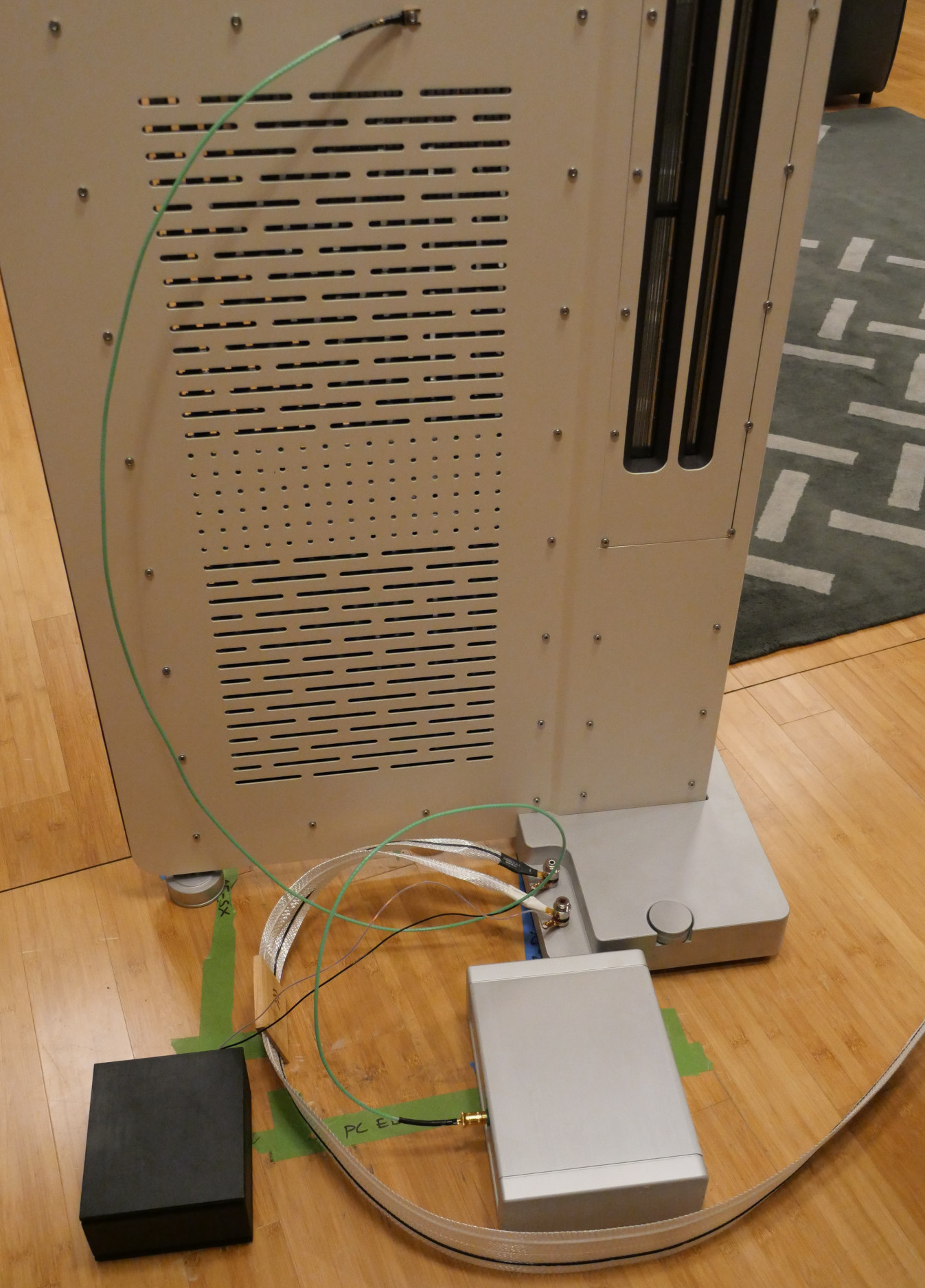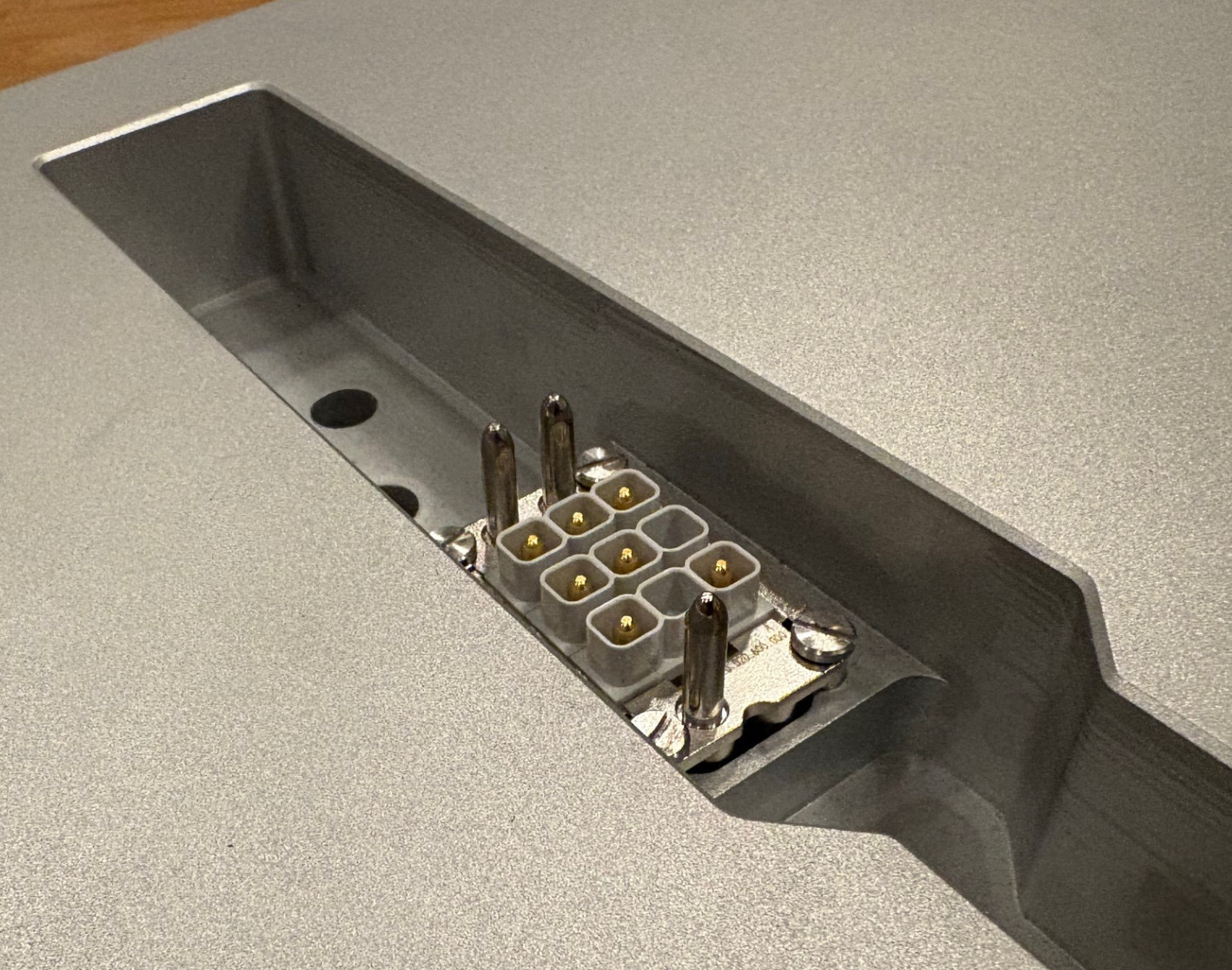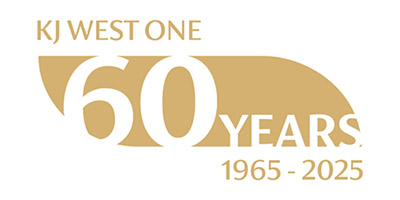
Anybody who is familiar with Neodio’s Origine B2 footer will notice the uncanny resemblance between it and the Ref II’s cylindrical foot. It’s no coincidence and Diptyque are more than happy to recommend using the Origine footer (running on an M6 thread) in place of the supplied foot. It’s an upgrade I’ll report on in the main review.

Moving to the other side of the speaker and the main foot/crossover block, I have a couple of observations. The first and most basic is that the Ref II is available with a bi-wired crossover, an arrangement that also allows for bi-amping. That alone is reason enough to order the speaker in bi-wired form, or upgrade to a bi-wired crossover as and when circumstances (and presumably funds – although I’d expect a substantial trade-in) allow. Which brings me to my second point. The crossover block communicates with the drivers via the multi-pin connector as seen above. The review units I have here are not new and are well travelled, having been used for demonstration and at shows. After initial set-up and listening, I removed the crossover blocks and cleaned/treated both the pins on the foot and the sockets on the panel, with Andante Largo Super TMD contact preserver/enhancer – with real benefits in terms of clarity, reduction in grain, apparent noise-floor/transparency and micro-dynamic response. Andante Largo suggest that the TMD treatment should last a couple of years. It would certainly be no hardship to renew it (and treat the speaker binding posts at the same time) on an annual basis. Given the modular interface, it’s definitely something I’d be doing.

Finally, the whole question of bi-amping is itself peculiarly pertinent to the Diptyque speakers. Adding chassis grounding to the Reference IIs underlines just how responsive the speakers are to any improvement in dynamic response. The company claims 89dB sensitivity for the Ref IIs and, while there is certainly debate about how you should measure the efficiency of a di-pole and how comparable the results are with those achieved with box speakers, in terms of immediacy and dynamic ‘jump’, the Ref IIs don’t sound like the more efficient speakers that I’m familiar with from the likes of Stenheim and Living Voice. Yet these are exactly the areas of performance that bi-amping delivers. Given the Diptyques’ reaction to the QKores, the promise of bi-amping is hard to ignore. Yes, you can run the Ref IIs with any moderately capable amplifier, but give them some serious power and they love it. Give them that power in bi-amped form and I suspect they’ll love it a whole lot more. Bi-amping doesn’t just offer potential performance advantages with this speaker: it also opens up a whole host of more affordable partnering options. So, that too is on the agenda for the full review. The Reference IIs are already generating some highly enjoyable results, but there’s definitely more to come. The review is on the way, but if yopu want more information about the Reference IIs in the meantime (or any of Diptyques other, more affordable models) visit www.diptyqueaudio.com


